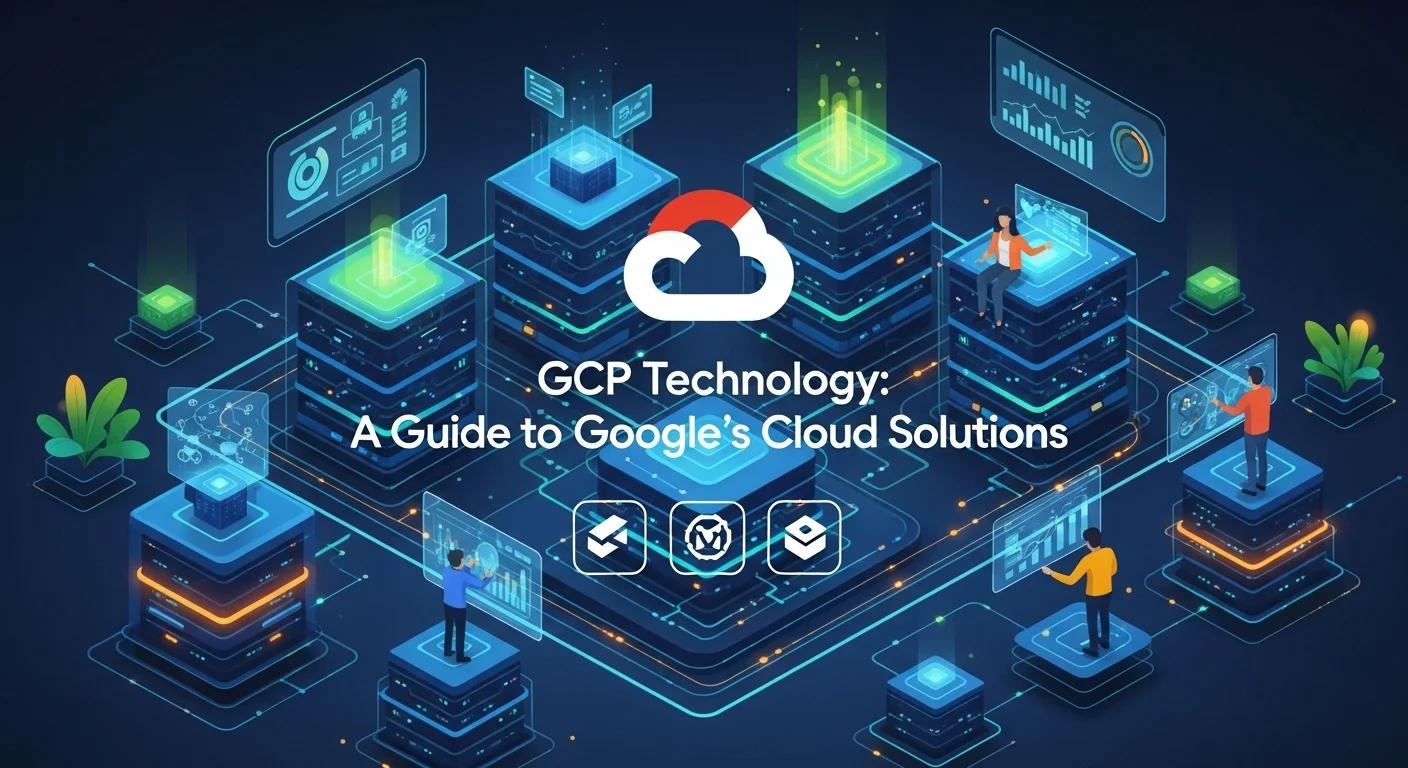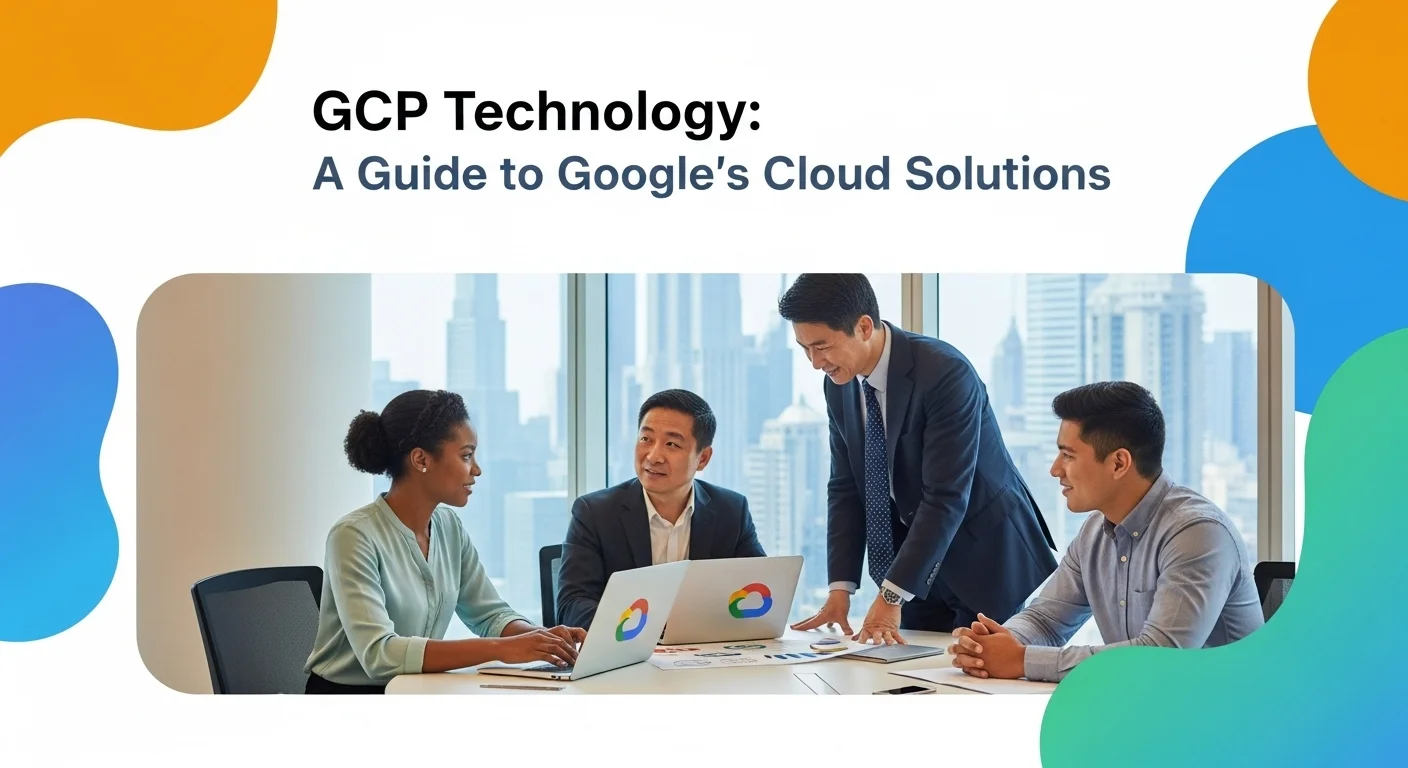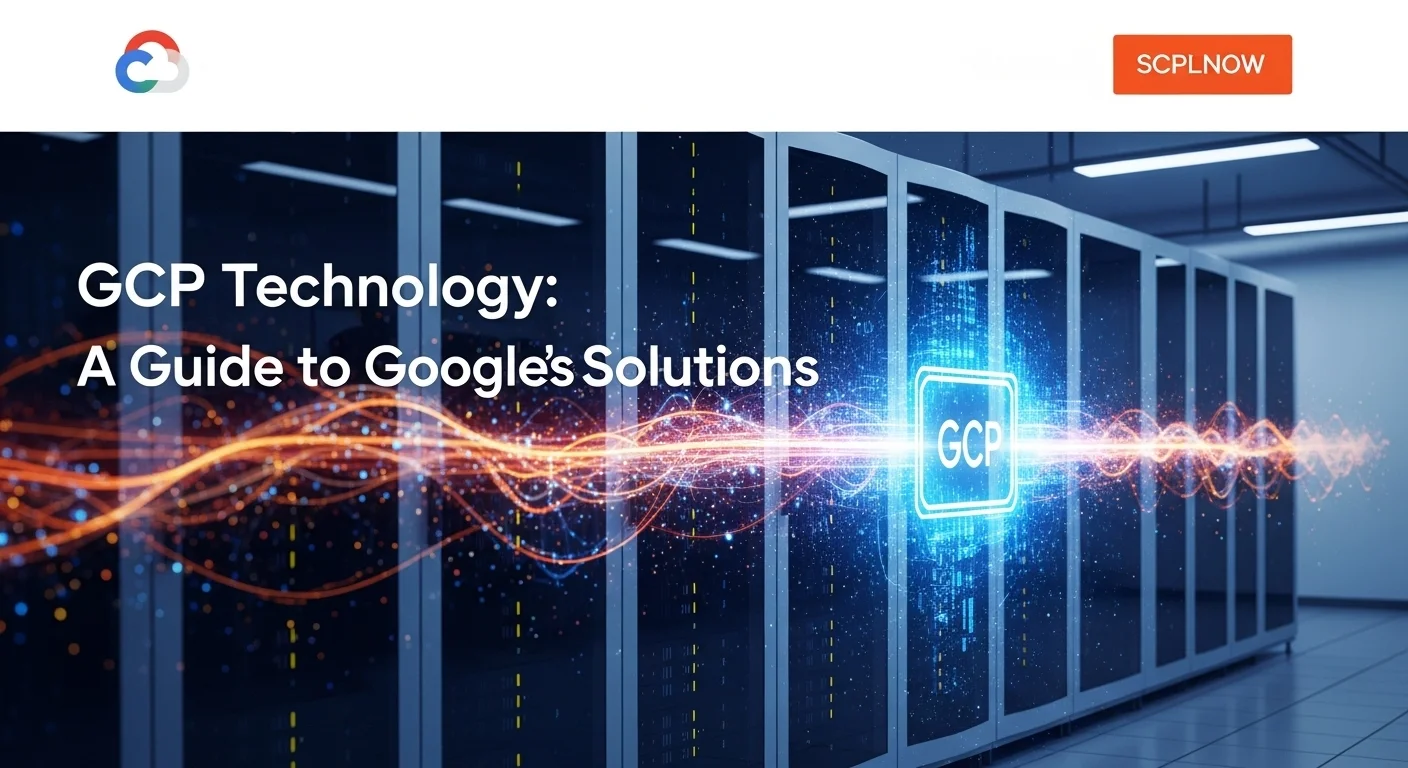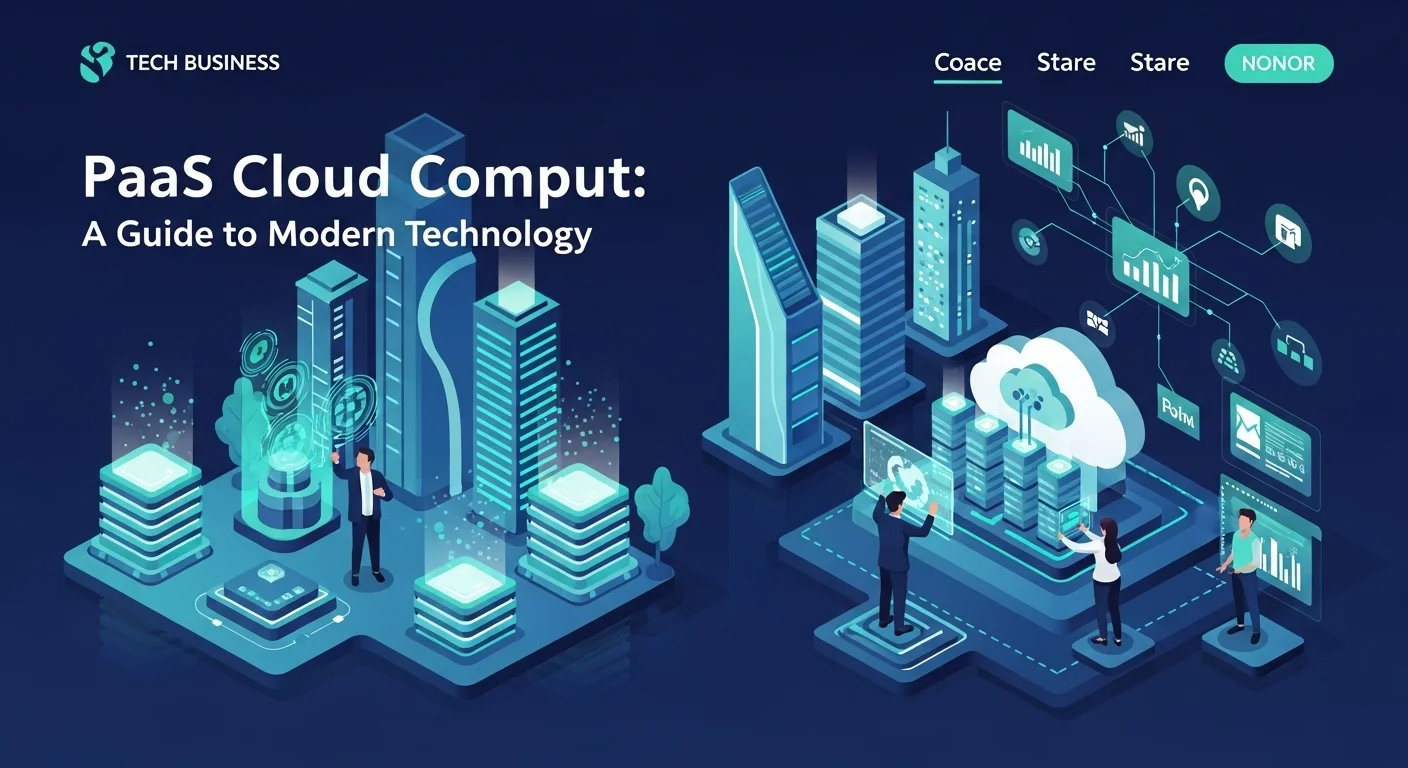Unlocking Google Cloud: A Practical GCP Guide for Real-World Success

Executive Summary
I've spent years helping businesses navigate the cloud, and one platform I consistently rely on is Google Cloud Platform (GCP). It's more than just a set of tools; it's the same powerful infrastructure that runs Google Search and YouTube. In this guide, I'll walk you through what GCP really is and why it's a game-changer for businesses of any size. We'll break down the essentials, from its core services like Infrastructure as a Service (IaaS) to the nitty-gritty of managing virtual machines with Google Compute Engine (GCE). We'll also tackle two topics I'm passionate about: building a rock-solid security posture and keeping your costs in check. I’ll even introduce you to some cutting-edge tech like Confidential Computing. My goal is to give you a clear, human-friendly roadmap to leveraging GCP's power for real innovation and efficiency.
Table of Contents
Table of Contents
- What is GCP and Why Does It Matter?
- Getting Started: GCP IaaS and Core Services
- The Non-Negotiable: GCP Cloud Security
- The Next Frontier: GCP Confidential Computing
- A Deep Dive into GCP for Business Solutions
- Pro Tips for an Unbeatable GCP Experience
What is GCP and Why Does It Matter?
When I first started working with cloud platforms, it felt like learning a new language. But behind all the acronyms is a simple, powerful idea: accessing world-class technology without having to build it yourself. That's the heart of Google Cloud Platform (GCP). It’s Google’s massive, global suite of cloud services, and it’s become a critical tool for companies looking to grow and innovate. Its real importance isn't just about renting servers; it's about tapping into a whole ecosystem of services for computing, data storage, machine learning, and more. This flexibility allows everyone, from a two-person startup to a global enterprise, to build amazing things. To get started, it helps to understand the three main ways you can use the cloud: Infrastructure as a Service (IaaS), where you manage the core components; Platform as a Service (PaaS), where the platform is managed for you; and Software as a Service (SaaS), where you just use the software. GCP offers all three, letting you pick the exact level of control you need, which is a huge reason why it’s become so essential in today's tech world.
Getting Started: GCP IaaS and Core Services
The foundation of GCP is its GCP IaaS offering. Think of it as the fundamental building blocks—computing, networking, and storage—that you can rent on a pay-as-you-go basis. For so many businesses I've worked with, this is a lifesaver. It means no more buying and maintaining expensive physical servers. The star player here is the Google Compute Engine (GCE). In simple terms, GCE is where you create and run your virtual machines (VMs), which are like your own private computers in Google's data center. You can customize them to your heart's content, picking the right OS, memory, and processing power for your specific job. A question I get all the time is about the gcp vm cost. No one wants a surprise bill. Thankfully, Google has smart pricing that helps you save. They offer things like automatic discounts for VMs that run for most of the month and bigger discounts if you commit to using them for a year or three. There are even super cheap 'Preemptible VMs' for tasks that can be interrupted, which is perfect for testing or batch jobs. Learning to navigate these gce gcp options is the first step to building a cost-effective and powerful setup.
The Non-Negotiable: GCP Cloud Security
Let's be clear: if you're moving to the cloud, security has to be job zero. The great thing about GCP cloud security is that it's built on the same model Google has used for years to protect services like Gmail and Search. It's a shared responsibility: Google secures the physical infrastructure, and you secure what you put on it. To help you, GCP gives you a fantastic toolkit. A crucial piece is Identity and Access Management (IAM), which is all about controlling who can do what. I always advise teams to follow the 'principle of least privilege'—only give access that is absolutely necessary. It's like giving out keys to your house; you only give the front door key, not the key to every room. GCP also has powerful network security tools and, importantly, encrypts all your data by default, both when it's stored and when it's moving across the network. This provides a strong security baseline right out of the box, giving you peace of mind as you build.
The Next Frontier: GCP Confidential Computing
This is where things get really exciting. For years, we've encrypted data when it's stored (at rest) and when it's moving (in transit). But what about when it's actually being used by the computer's processor? That's been the missing piece. GCP confidential computing solves this by encrypting data even while it's being processed. It uses a special, hardware-based secure 'enclave' in the CPU to keep your data and applications completely isolated and encrypted in memory. Not even Google can see inside. This is a massive leap forward for industries that handle incredibly sensitive information, like healthcare and finance. It unlocks possibilities for collaboration that were unthinkable before, allowing different organizations to analyze shared data without ever exposing the raw information to each other. Best of all, turning on a Confidential VM is often as simple as clicking a checkbox—no need to rewrite your applications. As we face growing privacy demands, gcp confidential computing isn't just a feature; it's the future of data security in the cloud, working hand-in-hand with your overall gcp cloud security strategy and built on the solid foundation of gcp iaas and gce gcp.

A Deep Dive into GCP for Business Solutions
Once you get past the basics, you start to see that Google Cloud is a treasure trove of services designed to solve real business challenges. A complete understanding isn't just about knowing the what, but the how and why. In my experience, the most successful teams are the ones that strategically use GCP's tools to build smart, secure, and scalable solutions. This section is my deep dive into how you can do just that. We'll get into the weeds of optimizing your virtual machine costs, implementing fortress-like security, and truly understanding the power of IaaS. A key thing to remember is that these concepts—gcp vm cost, gcp cloud security, gcp iaas, gce gcp, and gcp confidential computing—aren't separate silos. They are interconnected pieces of a puzzle that, when put together correctly, create something truly powerful for your business.
Mastering GCE and Managing Your GCP VM Costs
At the core of GCP's infrastructure is gce gcp (Google Compute Engine), but mastering it means going beyond just launching a VM. You need to understand the different 'families' of machines. There are general-purpose ones for websites, compute-optimized ones for heavy-duty tasks like gaming, and memory-optimized ones for massive databases. Choosing the right machine type is your first and best defense against a high gcp vm cost. A common mistake I see is overprovisioning—paying for power you don't need. GCP helps you avoid this with Custom Machine Types, where you can define the exact vCPU and memory you need. It’s like tailoring a suit instead of buying off the rack. For saving money, Committed Use Discounts are a no-brainer for predictable workloads, offering huge savings for a 1- or 3-year commitment. But my favorite trick for non-critical tasks is using Spot VMs. They use Google's spare capacity at a massive discount (up to 91% off!). They can be shut down with a short warning, but for batch processing or testing, they are an absolute game-changer for lowering your gcp vm cost. True cost management is a continuous process of monitoring your spending with GCP’s tools, setting budget alerts, and hunting for optimization opportunities.
Building a Fortress: A Closer Look at GCP Security
A solid gcp cloud security plan uses a 'defense-in-depth' approach—multiple layers of protection. It all starts with Identity and Access Management (IAM). This is where you get incredibly specific about who can access what resource. I always push teams to use custom roles to ensure no one has more permissions than they absolutely need. The next layer is your network. GCP’s Virtual Private Cloud (VPC) creates your own private corner of the cloud. You use firewall rules to act as a bouncer, controlling exactly what traffic gets in and out. For protecting your web applications from common attacks, Google Cloud Armor is your frontline defense. To tie it all together, the Security Command Center is your mission control. It gives you a single dashboard to see your entire security posture, find vulnerabilities, and spot misconfigurations. In a complex environment, having this centralized view is absolutely essential for staying in control and keeping your gcp iaas environment safe and sound.
Inside GCP Confidential Computing
While traditional security is great, gcp confidential computing takes protection to the ultimate level by securing data while it's in use. The technology behind this, specifically AMD's Secure Encrypted Virtualization (SEV), is fascinating. When you start a Confidential VM, it encrypts the machine's entire memory with a special key that is generated and managed by the hardware processor itself. This key is inaccessible to anyone—including Google or other machines on the same server. This means even in the unlikely event an attacker compromises the underlying system, your data in memory remains a garbled, unreadable mess to them. The beauty is in its simplicity; you can enable this feature with a click, without changing your application code. I’ve seen this unlock incredible projects. Imagine two hospitals wanting to train an AI model on their combined patient data to detect diseases earlier. They can do this with confidential computing without ever exposing sensitive patient records to each other. While there’s a small performance and gcp vm cost trade-off, the level of assurance it provides for sensitive workloads is unparalleled. This technology, built upon the flexible gcp iaas and powerful gce gcp, is truly the next chapter in secure cloud computing.

Pro Tips for an Unbeatable GCP Experience
Using Google Cloud is one thing; mastering it is another. Over the years, I've learned that getting the best experience comes from a strategic mix of best practices, constant optimization, and using the entire ecosystem of tools. This is where I share some of the tips and strategies I use with my own clients to make their cloud journey more efficient, secure, and innovative. We'll look at how to get a real handle on your expenses, build an airtight security strategy, and practically apply some of GCP's most powerful features. The core themes we've been discussing—gcp vm cost, gcp cloud security, gcp iaas, gce gcp, and gcp confidential computing—all come together here. Adopting these practices will not only save you headaches today but will set you up to scale and innovate with confidence tomorrow.
Beyond the Basics: Advanced GCP Cost-Saving Strategies
Keeping cloud costs down is a constant effort. To get serious about optimizing your gcp vm cost, you need deep visibility. I always tell my clients: if you can't measure it, you can't manage it. A pro move is to export your billing data to BigQuery. This lets you run powerful analyses and build custom dashboards to see exactly where every penny is going. Using labels on your gce gcp instances to track costs by project or team is non-negotiable. Another key activity is 'rightsizing.' GCP itself will give you recommendations to downsize VMs that are underutilized. Acting on these recommendations is like finding free money. Also, think architecturally. Can a big application be broken into smaller microservices? Can you use serverless options like Cloud Run, which only charge you when your code is actually running? And for any batch processing, make Spot VMs your default choice. You can even combine them into managed groups to create fault-tolerant clusters that are incredibly cheap. Finally, build a culture of cost-consciousness. Set up budget alerts that notify your team when spending is about to go over. By combining deep analysis with smart architecture and a cost-aware culture, you can truly master your gcp vm cost.
Putting It All Together: Your Defense-in-Depth Strategy
A mature gcp cloud security strategy is proactive, not reactive. It’s about building layers. Start with a solid foundation by using established security blueprints like the CIS Benchmark for GCP. Automate your security policies so they are enforced consistently. Your IAM policies should be ruthlessly restrictive. Regularly audit them to remove any unnecessary permissions and always enforce Multi-Factor Authentication (MFA) to protect against stolen passwords. On the network side, segment your workloads into different security zones with VPCs and use strict firewall rules. For any web-facing application, a WAF like Google Cloud Armor is a must. Finally, have a plan for when things go wrong. Enable detailed audit logs and use Security Command Center to constantly monitor for threats and vulnerabilities. Integrating these alerts into a central security system gives you a single pane of glass to watch over your entire enterprise. This layered approach ensures that if one defense fails, another is ready to stop an attack in its tracks.
Making Confidential Computing Work for You
Adopting gcp confidential computing is a strategic decision to raise your security bar. To do it right, you need to pick the right battles. While it’s easy to enable on a gce gcp instance, its true power shines when applied to workloads processing highly sensitive data—think financial records, health data, or trade secrets. The goal is to shrink your attack surface to a minimum. A fantastic practical use is for secure collaboration. I worked on a project where multiple companies wanted to analyze their data together for market insights, but no one was willing to share their raw data. Using a service built on confidential computing, they could pool their data in a secure enclave for analysis, and no one—not the other companies, not even Google—could see the raw inputs. It’s transformative. When you deploy these VMs, make sure you use the specially hardened OS images Google provides. Also, use the 'attestation' feature. This gives you a cryptographic receipt proving that your VM is running in a genuine, secure environment before you load your sensitive data. While gcp confidential computing is a powerful tool, remember it's one part of a complete security strategy. It must be combined with strong gcp cloud security practices to create a truly fortified gcp iaas environment.
Expert Reviews & Testimonials
Sarah Johnson, Business Owner ⭐⭐⭐
Good info on GCP, but as a business owner, I was hoping for more real-world examples I could apply directly.
Mike Chen, IT Consultant ⭐⭐⭐⭐
A helpful guide to GCP. It clarified a lot for me, though some of the technical bits could have been broken down a little more.
Emma Davis, Tech Expert ⭐⭐⭐⭐⭐
Fantastic article! It's incredibly thorough and was a huge help for my specialization. Everything was explained perfectly.



